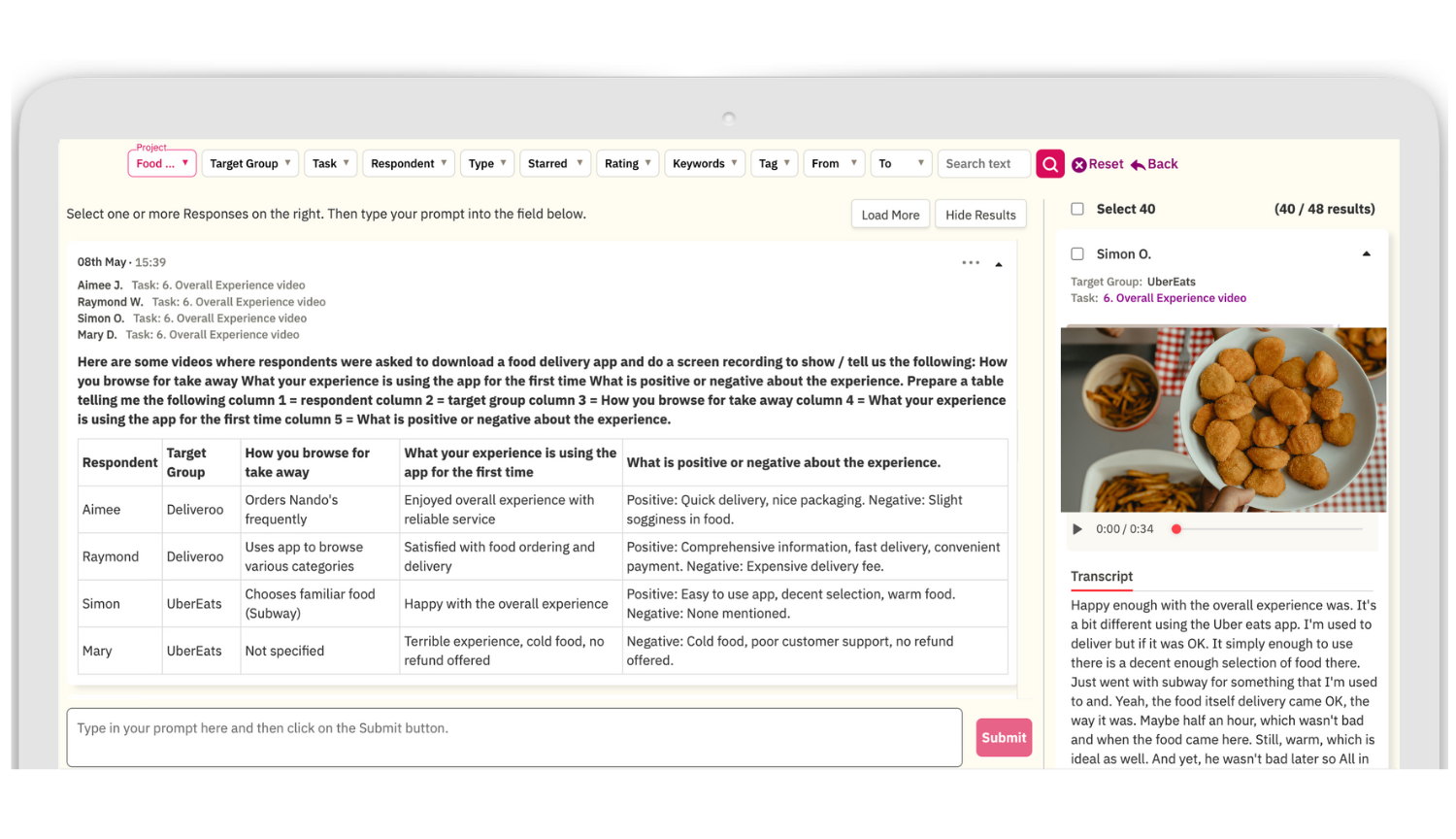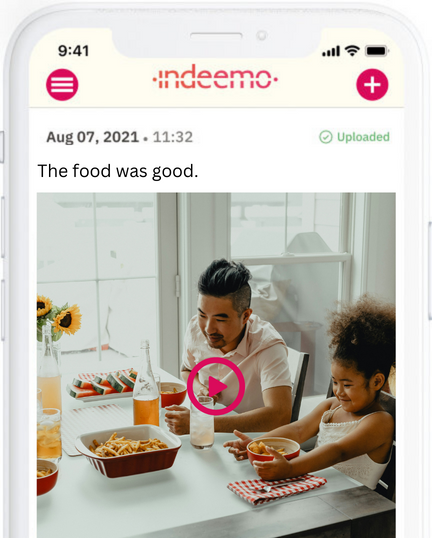What is Iterative Prompting? A quick guide for Researchers using Generative AI
Generative AI is transforming Qualitative Research, how data is analysed and how insights are surfaced. To fully harness the power of Generative AI tools, it is imperative that anyone in the business of understand needs to understanding Prompting and, more importantly how to evolve and iterate your prompts to continuously mine your research content to get the answers you need. Iterative prompting is the means by which researchers can truly unlock the power of Generative AI and this blog delves into the iterative prompting journey and offers researchers a comprehensive guide on how to get the answers they need, fast.
Understanding Iterative Prompting
Iterative prompting is the process of systematically refining and adjusting the prompts given to a Generative AI tool to improve the relevance, accuracy, and depth of its outputs. This approach is akin to a conversation where each response informs the next question. It's a dynamic process that evolves based on feedback, requiring researchers to be adaptable and observant of the AI's responses. Iterative prompting is just like iterative research - focusing on design, learning, and refinement to achieve your research objective.
The Significance of Iterative Prompting in Research
In qualitative research, where the data is rich with nuances and subtleties, the precision of a prompt can significantly influence the quality of the analysis. Iterative prompting ensures that the AI tool you are using is accurately aligned with the research objectives, thereby enhancing the efficiency and effectiveness of data analysis.
Prompting Strategies for Researchers: From Fundamentals to Frontier (2025 Edition)
Prompt engineering has rapidly evolved from simple trial-and-error to a sophisticated, iterative craft, especially for researchers using generative AI to analyse qualitative data. Whether you’re synthesising diary studies, summarising IDIs, or exploring unmet needs, mastering the art of prompting can dramatically improve output quality.
This updated framework brings together both foundational and advanced techniques to guide your prompting workflow.
Tier 1: Core Prompting Foundations
These are essential strategies for anyone starting with AI-assisted research:
Start Broad, Then Narrow
Begin with an open-ended prompt to gauge how the AI interprets your intent:
“Summarise the participant’s experience with the onboarding process.”
Then refine based on response quality:
“Summarise the participant’s frustrations with the onboarding process, focusing on first impressions and tone of communication.”
Use Feedback Loops
if the AI misses the mark, reframe or build on the last prompt. Each round brings clarity.
Test Prompt Variations
Experiment with tone, structure, and level of detail:
“Create a bulleted list of pain points”
vs.
“Write a paragraph that captures emotional highs and lows in the experience.”
Tier 2: Advanced Prompting Strategies for 2025
With LLMs now supporting more nuanced reasoning, researchers can push deeper into analysis and synthesis using these next-gen techniques:
Chain of Thought Promoting
Break down the task into logical reasoning steps to improve depth and structure:
“Step 1: Identify key events in the user journey. Step 2: Describe emotional tone at each stage. Step 3: Suggest unmet needs implied by the user’s experience.”
This helps the AI “think aloud” and avoids shallow summaries.
Reflection Prompting
Ask the AI to assess or improve its own response:
“Re-evaluate the summary above. Are there any key emotional insights that were missed?”
This self-review step increases accuracy and nuance - especially helpful when analysing complex or ambiguous feedback.
Real-World Example: Prompt Refinement in Action
Initial Prompt:
“Summarise this customer interview.”
Output:
“The customer liked the service but had some issues with speed.”
Refined Prompt (CoT + Reflection):
“Step 1: Identify what the customer liked. Step 2: Detail each frustration with timing and expectations. Step 3: Reflect on the tone, was it frustration, disappointment, or acceptance? Conclude with what the customer is likely to want improved.”
Improved Output:
A structured, emotionally grounded, and insight-rich summary ready for immediate inclusion in your report or slide deck.
Key Takeaway
Iterative prompting isn’t just about getting better answers, it’s about extracting deeper human truths from AI. With foundational strategies to get started and advanced methods to push boundaries, researchers can confidently use generative AI as a thinking partner, not just a tool.

What you can do with Indeemo:
• Recruit Participants in hours
Recruit participants in hours from a panel of 3 million+ Respondents.
• Speed up analysis with Generative AI
Use Generative AI prompts for summarisation, translation, thematic analysis, sentiment analysis etc. and reduce analysis time by at least 40%.
• Analyse Interviews and IDIs
Import interviews from Zoom, Microsoft Teams or your computer, transcribe them in 27 languages and analyse them fast with Generative AI.
• Analyse Interviews and IDIs
Import interviews from Zoom, Microsoft Teams or your computer, transcribe them in 27 languages and analyse them fast with Generative AI.
Examples of Iterative Prompting in Action
Analysing Emotional Trends in Social Media Posts
Initial Prompt: "Summarise the overall sentiment in these video diaries."
AI Response: Provides a basic summary without much depth on specific emotional trends. Refined Prompt: "Identify key emotional trends and the context in which they appear for each video diary entry."
Further Refinement: Based on the AI's response, you might specify particular emotions or contexts, e.g., "Highlight instances of joy and frustration related to product experiences in these diary entries."
Exploring Themes in Interview Transcripts
Initial Prompt: "What are the main themes discussed in this focus group transcript?"
AI Response: Lists a set of broad themes.
Refined Prompt: "What are the main themes discussed in this focus group transcript? Provide examples and frequencies of how these themes emerge across the focus group."
Further Refinement: If a particular theme needs deeper exploration, you might prompt, "Examine the theme of 'community engagement' and its impact on interviewees' perspectives."
Navigating Challenges in Iterative Prompting
While iterative prompting is a powerful technique, it's not without its challenges. Researchers may encounter issues like response variability, where the AI's output changes significantly with minor prompt adjustments, or prompt fatigue, where continuous refinement doesn't seem to yield better results. Overcoming these challenges requires patience, a willingness to experiment, and sometimes, taking a step back to reassess the research questions or the AI tool's capabilities.
Be Iterative: Think Like a Researcher, Not a Programmer
One of the most important things to remember when working with generative AI is this: you don’t have to get it right the first time.
Prompting is not a one-and-done task, it’s a process of refinement. Like moderating an interview or probing during a focus group, working with AI requires you to build context gradually and follow the thread of insight. Each prompt you craft is a hypothesis, and each AI response is feedback that helps you sharpen your next question.
Why Iteration Matters
LLMs are context-sensitive: A small change in wording can produce dramatically different outputs.
You’re not always sure what you’re looking for at the start: Iteration helps clarify your research goal in real-time.
The quality of insight compounds: Each prompt helps the AI better understand the tone, audience, and level of depth you expect.
What Iteration Looks Like in Practice
First Prompt
“Summarise this participant’s pain points.”
Evaluate the Output
Is it too general? Did it miss emotional cues? Are the insights too surface-level?
Refine the Prompt
“List the participant’s top 3 frustrations, and describe how each one made them feel, using direct quotes where relevant.”
Push Further
“What unmet need might this frustration point to? Suggest an improvement based on the participant’s feedback.”
Embrace the Learning Curve
Every interaction is a chance to learn what works, and what doesn’t. With a bit of persistence, you’ll develop a prompting style that’s efficient, consistent, and tailored to your team’s analysis goals.
Bottom line: Think of AI prompting like an iterative qual research method in itself - fluid, adaptive, and led by discovery. The more you probe, the richer the insights become.
Where Can Iterative Research Be Applied?
Contact Us Today
Contact our Indeemo experts for a free demo and see how we can revolutionise your approach with our Generative AI tool.






